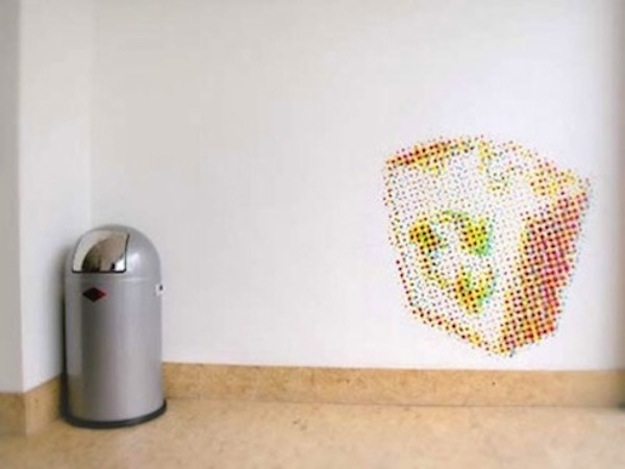It could hardly be simpler. Yet as is often the case with things that initially seem simple, first impressions can be deceiving here, because the overturned laptop and the seemingly indifferently placed recycling bin ironically represent this exhibition's theme. While this exhibition's organizers primarily wanted to emphasize the content side of this phrasing of the question, and in their comparison between 'reading' and 'listening to jazz music' address a typically intellectual formulation of a problem (with a rant that leaves no room for any doubt about the answer), Henk Boverhoff gives a clear and practical answer: it's not reading itself, but rather the suggestion of reading. It's not the processing of content that will lead to new reading experiences, but simply the computer as an 'e-book' that contains the texts, and the trashcan in which all of our reading experiences will, for the most part, ultimately wind up, as a result of our consistently malfunctioning memories. It's the answer from an artist of a generation that presents itself as being beyond reading, certainly beyond reading literature. Of course this is an ironic answer, as if to say that these days it's no longer the traditional book, but rather only the computer and the internet that can provide reading experiences. So, just pose with a laptop opened like a book on your lap, and the organizers get what they want. Because it's clear that Henk Boverhoff is giving what's requested of him by the organizers of this exhibition, i.e. the editors of Mediamatic Magazine, who are intellectuals and who also want it known. That's clear, right? Or is there something more going on here? Regardless, he nonetheless touches upon a sensitive issue by making it clear that he finds this 'cry for help' (i.e. Is reading becoming as classical as listening to Jazz?) a very unattractive way of drawing attention to the traditional reading experience. Or is it that Boverhoff doesn't really understand Mediamatic Magazine's intentions, and perhaps honestly thinks that Mediamatic still has traditional readers?
That can't be, right?
In any case, even in painting he's taken a stance: the open laptop is nothing but the projection of an industrial image from an advertising brochure, traced with charcoal on a pretty beige background on the wall. Yet the recycling bin, so recognizable as the trashcan logo on your computer's desktop, is painstakingly bored through step by step, with the traditional care of the craftsman. Or at least Boverhoff and his colleague Harm Jan Timmer spent days laying down a trashcan, with all manner of brushes and pencils, colors and shapes, that knows no equal; so much attention paid to a 'forgotten' object that here suddenly serves as a new artistic tool. Because he won't settle for anything less: this trashcan is the first in a series in which he uses the form of unsuccessful color prints in cyan, magenta, and yellow to conjure up artistic images.
Translation: Douglas Heingartner
